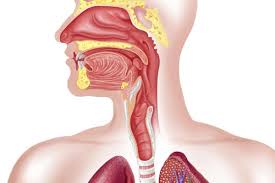Esophageal Spasms Causes, Symptoms, Diagnosis and Treatment

What are Esophageal Spasms?
Normally, contractions of the esophagus, the tube that connects the mouth and the stomach, move food from the mouth to the stomach with a regular, coordinated rhythm.
Esophageal spasm is a condition in which uncoordinated contractions of the esophagus occur.
These spasms can prevent food from reaching the stomach. When this happens, the food gets stuck in the esophagus.
It is thought to result from motility disorders of the esophagus.
It can cause dysphagia, regurgitation and chest pain.
Esophageal spasm is not common. Often, symptoms that may suggest esophageal spasm are the result of another condition such as gastroesophageal reflux disease (GERD) or achalasia.
Types of esophageal spasms include:
- diffuse esophageal spasms, which is accompanied by regurgitation of food and liquid
- Nutcracker esophagus, which is marked by absence of regurgitation.
Causes of Esophageal Spasms:
The underlying cause of esophageal spasms is not clear.
However, they appear to be related to abnormal functioning of nerves that control the muscles which is used to swallow.
It may result from a disruption of the nerve activity that coordinates the swallowing action of the esophagus. In some people, very hot or very cold foods may trigger an episode.
The following factors increase the likelihood of developing esophageal spasms:
- High blood pressure
- Anxiety or depression
- Drinking red wine or consuming very hot or very cold foods or drinks
Symptoms of Esophageal Spasms:
Symptoms may include the following:
- Squeezing pain in the chest.
- The pain is often intense, and one might mistake it for heart pain (angina).
- Difficulty swallowing, sometimes related to swallowing specific substances, such as red wine or extremely hot or cold liquids.
- The feeling that an object is stuck in the throat.
- The return of food and liquids back up the esophagus (regurgitation).
Diagnosis of Esophageal Spasm:
In order to diagnose esophageal spasms, the following procedures may be performed:
- Endoscopy, in order to see inside the esophagus.
- The doctor may remove a tissue sample (biopsy) for testing to rule out other possible diseases.
- X-ray, taken after one swallows a contrast liquid.
- Esophageal manometry, to measures muscle contractions in esophagus when the patient swallows water
- Esophageal pH monitoring, to determine if stomach acid is flowing back into the esophagus (acid reflux)
Treatment of Esophageal Spasms:
Treatment depends upon the frequency and severity of esophageal spasms.
In case of occasional spasms, avoidance of foods which trigger it is recommended.
If the spasms are severe and cause difficulty in swallowing, the following treatment options are available:
- Managing any underlying conditions.
- Protons pump inhibitor, such as lansoprazole, to treat GERD.
- Antidepressants to reduce sensation of pain
- Trazodone
- imipramine
- Medications to relax the swallowing muscles.
- Sildenafil (Revatio, Viagra)
- onobotulinumtoxin A (Botox) injections
- calcium channel blockers, such as diltiazem (Cardizem CD, Tiazac)
- Surgery (myotomy).
- Peroral endoscopic myotomy (POEM).
By : Natural Health News




